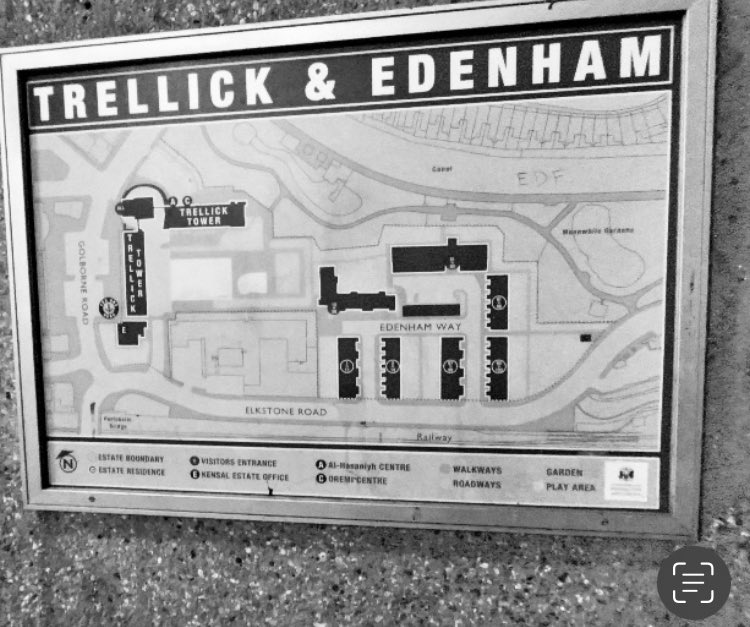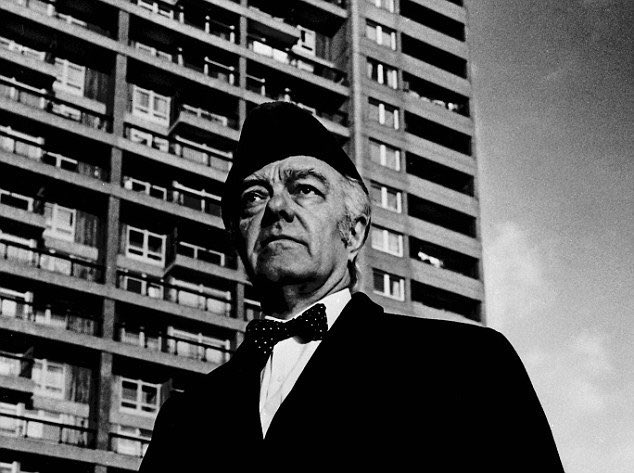Designed in 1966 by Ernő Goldfinger and built in 1968-1972 Trellick Tower is considered a symbol of brutalist architecture, and of the policies of urban planning and post-war reconstruction.
A typical example of large social housing complexes created for the urban proletariat.
A typical example of large social housing complexes created for the urban proletariat.

The Tower at the time was attacked by the press as a symbol of social policy of segregation of the disadvantaged classes in peripheral zones. 

Trellick Tower was “left isolated in a no-man’s-land still occupied by slums and by the insalubrious row houses the towers were supposed to replace. The state of abandon and neglect of the large social housing projects led to unmanageable situations” (Braghieri, 2019)
“Public housing blocks had no security services, and the communal staircases, which in the case of the towers connected over two hundred apartments, became true nightmares for the inhabitants” (ibidem)
“The press exacerbated an already critical situation by emphatically reporting on cases of vandalism, sexual violence, drug dealing, burglaries and muggings in the corridors. Underground park- ing areas and cellars could no longer be used due to the constant danger of aggression” 

“They were often closed, placed off limits, demolished, as in the case of the Trellick. The cars, parked in a disorderly way around the buildings, were constant targets for hooligans. The heated staircases became shelters for the homeless and places for prostitution”.
“Constant demands for intervention to restore order and safety led to no results. The sensation on the part of tenants of being prisoners in their own homes generated the nickname Tower of Terror” 

See for more references
‘The Towers of Terror’: A Critical Analysis of Ernő Goldfinger’s Balfron and Trellick Towers
By Nicola Braghieri
‘The Towers of Terror’: A Critical Analysis of Ernő Goldfinger’s Balfron and Trellick Towers
By Nicola Braghieri
https://twitter.com/CogitatioUP/status/1194220928319807488
The Tower in recent years has been listed as Grade II building, protected by heritage regulation and has been interested by a process of social regeneration (and real estate speculation), becoming coveted places for life and work.
He wrote: “The whole object of building high is to free the ground for children and grown-ups to enjoy Mother Earth and not to cover every inch with brick and mortar” (Goldfinger, E., 1968 February 21. Signed letter. The Guardian.) 

Non-Functionalist Realism and Objectivity were the other cornestones of Goldfinger’s project: Ernő Goldfinger never covered the walls of his buildings with stucco or other cladding materials 

“It is my belief that the function of a facade, from the aesthetic point of view, is not to ‘express’ something which is behind it, but to form the enclosing vertical membrane of the street (Goldfinger, E. 1957, Criticism: The architect replies. Architects’ Journal, 126) 

Goldfinger wrote: “I have created here nine separate streets, on nine different levels, all with their own rows of front doors. The people living here can sit on their doorsteps and chat to the people next door if they want to.
A community spirit is still possible even in these tall blocks, and any criticism that it isn’t is just rubbish....These tall blocks are wonderful, in as much as they enable us to bring the countryside into the towns”.
(Goldfinger, E. 1968, 1 March, East London Advertiser)
(Goldfinger, E. 1968, 1 March, East London Advertiser)
But, as seen before, the reality went in a different direction.
Trivia: Ian Fleming, who often used for the characters of his novels the names of his friends and enemies, named the villain of 1964 007-episode Auric Goldfinger. Auric like Ernő he was a Marxist Jew who had migrated from an eastern country and then become a British citizen.
Read more about the feud between Fleming and Goldfinger which ended in court, here
theguardian.com/uk/2005/jun/03…
theguardian.com/uk/2005/jun/03…
(I have taken the pictures and videos of Trellick Tower with @ray_ban stories in London, 7th December, 2021)
A couple of pictures I took of Trellick Tower are now NFTs here hicetnunc.art/l_aspide
• • •
Missing some Tweet in this thread? You can try to
force a refresh










